martedì 31 dicembre 2013
A year-end walking between stations in London
We arrived at the end of this year.. The sums of the'll pull through April, when the blog will celebrate its (first) three years of life: numbers, visits, visitors, inquiries and requests, I will assess all the next "blog birthday".
Over the past two years (and a half) I've leaved and returned many times. Often I went by train, a way of travel that I discovered during these years. I traveled by trains in Italy, England and in other European countries.
Today, in this post, the last one of 2013, I wanted to take you around in some of the main train stations in London.
The train stations, after all, are not just places "where you take a train, perhaps running to not lose it". Train stations are places of passage, in where many people meet and collide leaving or returning. Those are places where people greet each other, only to find themselves a few days later... Or even after months
In a train station there are a lot of people waiting for a train or waiting for someone (who knows, maybe boyfriend or girlfriend), or run in order not to lose it. I often pass through these buildings, strange places out of time. Places of thoughts and feelings that you are unable to stop.
And, after all, during the last two years (and a half) have been years of train takend and missed, expectations in deserted stations. Years of books read in those long waits and views that ran beside me between one station and another.
The stations in London are special: they are not old, but even modern. They are "half and half" , the buildings of the past, the first ones, have been updated, systematic, and integrated with new more modern parts. this makes them special, almost enigmatic
venerdì 22 novembre 2013
The archeologial part of Paphos
In this post I'm going to talk about the “archeological Paphos”. What does it means? I'll tell you: one thing that I noticed and that struck me a lot is the amount of archaeological remains that we are in this city. Turkish bath of the Ottoman age, amphitheater of the Hellenistic period and tombs of various period of history, which are directly accessible from the street.
One thing that impressed me a lot of this city, perhaps the thing that struck me the most, is the amount of archaeological remains that are found in this city: a turcho Ottoman-era baths, amphitheatres and tombs of the Hellenistic period directly accessible from the road. All visible without any entrance fee (or "free offer") you can find these remains just walking along the streets. However, because there is a but, there are absolutely no descriptions that tell us what we're looking at, except in rare cases (for example, the column of St. Paul and the Monastery of Chrysorrogiatissa).
You can try to figure out what you are looking at using a tour guide (me and my mom had the Lonely Planet guide of Cyprus), but it is not at all simple.
Precisely for this reason I admit to not knowing how to give a precise path to follow to see all these things, but I can tell you what you can find wandering the streets of this village in Cyprus, in addition to all this, it also shows signs of the crisis that hit countries of Greece a few months ago (as he told an Italian girl I met them, it seems a carnival in bankruptcy).
Let's start with the remains of a Roman amphitheater: I have not found the entrance, so I took the pictures from behind a sort of fence that separate it from the road
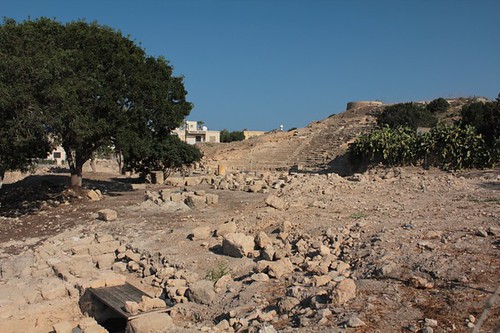 Near this site, there are Turkish baths from the Ottoman era: you can't get in, but you can peek inside.
Near this site, there are Turkish baths from the Ottoman era: you can't get in, but you can peek inside.
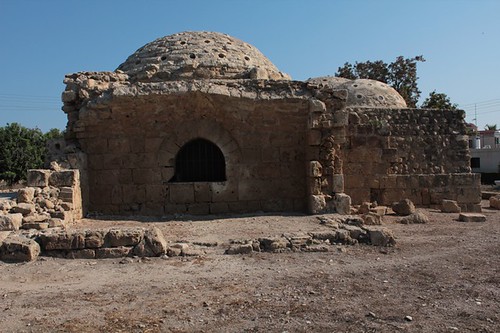 We continue with the column of St. Paul and the Monastery of Chrysorrogiatissa, that are near, one facing the other. This is the place where, according to the story, Saint Paul was flogged before starting the evangelization of the area.
We continue with the column of St. Paul and the Monastery of Chrysorrogiatissa, that are near, one facing the other. This is the place where, according to the story, Saint Paul was flogged before starting the evangelization of the area.
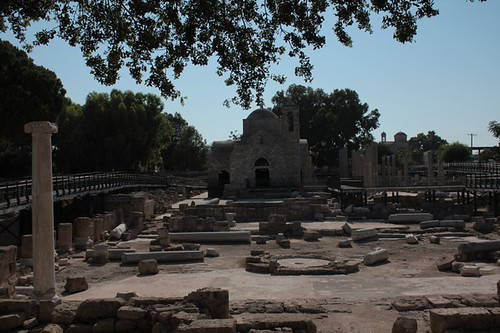 There are, between the column and the monastery, the remains of several columns. We could not enter the building because of a function (the thing that we immediately noticed, standing in the doorway, was, in addition to the interior, the voice of woman holding the function: there're used to that!).
There are, between the column and the monastery, the remains of several columns. We could not enter the building because of a function (the thing that we immediately noticed, standing in the doorway, was, in addition to the interior, the voice of woman holding the function: there're used to that!).
 Then there are the (small) Catacombs of Solomon. These are marked with a (small) sign, just because small, it is difficult to notice
Then there are the (small) Catacombs of Solomon. These are marked with a (small) sign, just because small, it is difficult to notice
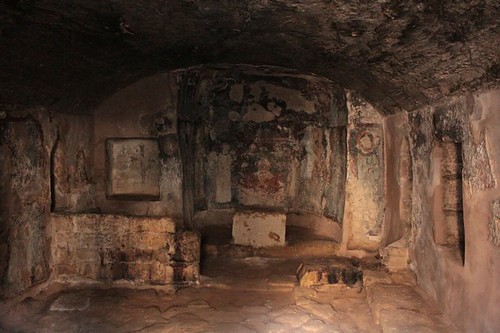 Then we come across in some caves. We imagined that these were tombs, also on the basis of what the guide said. Unfortunately, due to the fact that things are marked bad (or not) we had to go for exclusion :)
Then we come across in some caves. We imagined that these were tombs, also on the basis of what the guide said. Unfortunately, due to the fact that things are marked bad (or not) we had to go for exclusion :)

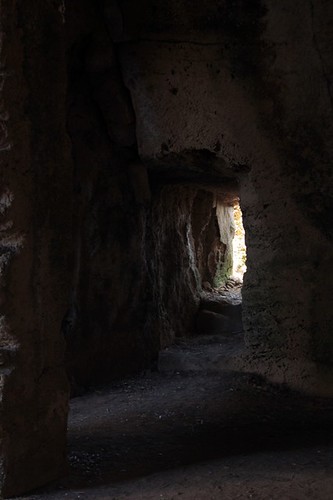 The fact that these sites are pretty much left to themselves struck me very much! The town of Paphos is practically an open-air archaeological site that should be taken care of! There is, in these remains, so much (too much) history that should be preserved, because it can then be told to future generations.
The fact that these sites are pretty much left to themselves struck me very much! The town of Paphos is practically an open-air archaeological site that should be taken care of! There is, in these remains, so much (too much) history that should be preserved, because it can then be told to future generations.
 Near this site, there are Turkish baths from the Ottoman era: you can't get in, but you can peek inside.
Near this site, there are Turkish baths from the Ottoman era: you can't get in, but you can peek inside.
 We continue with the column of St. Paul and the Monastery of Chrysorrogiatissa, that are near, one facing the other. This is the place where, according to the story, Saint Paul was flogged before starting the evangelization of the area.
We continue with the column of St. Paul and the Monastery of Chrysorrogiatissa, that are near, one facing the other. This is the place where, according to the story, Saint Paul was flogged before starting the evangelization of the area.
 There are, between the column and the monastery, the remains of several columns. We could not enter the building because of a function (the thing that we immediately noticed, standing in the doorway, was, in addition to the interior, the voice of woman holding the function: there're used to that!).
There are, between the column and the monastery, the remains of several columns. We could not enter the building because of a function (the thing that we immediately noticed, standing in the doorway, was, in addition to the interior, the voice of woman holding the function: there're used to that!).
 Then there are the (small) Catacombs of Solomon. These are marked with a (small) sign, just because small, it is difficult to notice
Then there are the (small) Catacombs of Solomon. These are marked with a (small) sign, just because small, it is difficult to notice
 Then we come across in some caves. We imagined that these were tombs, also on the basis of what the guide said. Unfortunately, due to the fact that things are marked bad (or not) we had to go for exclusion :)
Then we come across in some caves. We imagined that these were tombs, also on the basis of what the guide said. Unfortunately, due to the fact that things are marked bad (or not) we had to go for exclusion :)

 The fact that these sites are pretty much left to themselves struck me very much! The town of Paphos is practically an open-air archaeological site that should be taken care of! There is, in these remains, so much (too much) history that should be preserved, because it can then be told to future generations.
The fact that these sites are pretty much left to themselves struck me very much! The town of Paphos is practically an open-air archaeological site that should be taken care of! There is, in these remains, so much (too much) history that should be preserved, because it can then be told to future generations.
domenica 29 settembre 2013
Four days in Paris
Today I'm going to tell you about my short trip to Paris. I have already spoken about the useful information in another post so,today, I can talk only about what we saw and we did in my four days in Paris.
We walked a lot and we also got tired a lot, but we were in Paris, a very beautiful city (even though my favorite European capital remains London).
We arrived on Monday at lunchtime, we took the "OrlyBus" and then we walked to the hotel, with a lunch break annexed.
The afternoon of the first day we did what we could call "tour of the churches": after the first stop to the Pantheon (ticket costs 7.5 euro), where there are buried several important person of the French history, we headed to 4 churches close enough to each other and near the Latin Quarter (the area where our hotel was located): Saint Severin, small and very beautiful (in my opinion it must be visited), Sain Julien le Pauvre, evidence of the transition from Romanesque to Gothic style, Saint Germain des Prés with its Romanesque bell tower and remains of the Merovingian construction(visible in the Saint Symphorien chapel), ending with Saint Sulpice, the largest church in Paris after Notre Dame.
To conclude the day we went for a walk into the Jardin du Luxembourg, getting close to where we were housed and it really is a place to relax. Of this garden hit the tables to play chess (and the crowd of observers), tennis courts (and yes, there are people who play there) and the area for playing boules. It affects the large amount of chairs made available to the visitors of the park as there is a ban on sitting on the grass
On the second day (Tuesday), we woke up early. We started our walk with a visit to Notre Dame. I do not think that this place need many words to be described: beautiful and impressive.
From there we moved to the Conciergerie/Palais de Justice. Next to it there is the Saint Chapelle that we have not seen for the long (very slow) queue that was there. The ticket, however, costs 8.5 Euros (with discounts for certain categories). We moved towards the Louvre through the Chatelet and Saint Germain l'Auxerrois (parish of the French royal family since the House of Valois settled in the Louvre). So we go to the Place de la Concorde through the Jardin des Tuileries.
We had lunch and then we rested at the hotel (it looks like an easy path, but it is quite long and tiring). In the evening we took the subway and to go to Montmartre, where we visited the Sacre Coeur and we remained open-mouthed in front of the view of Paris (you will see all, or nearly so, the most important monuments of the city). So here we had dinner in Place du Tertre.
We started our third day in Paris with a walk to the cemetery of Saint Vincent, the smallest cemetery in Paris. Then we moved to "Montmartre Cemetery" where are buried many important figures of the past (such as Hector Berlioz, Stendhal, Edgar Degas and Dumas fils). So we went to the famous Père Lachaise cemetery, looking for other important characters of the story: in that cemetery there us, among others, the grave of Jim Morrison (and Heloise and Abelard, La Fontaine, Gay Lussac, Balzac and Delacroix). We stopped to have lunch (there were two p.m. passes for a while) and then we went toward the Arc de Triomphe and the Champs-Élysées.
You can go to Paris without seeing, at least once the Eiffel Tower? Of course not! So we arrived to the Jardin du Trocadero, with its fountains, and then we passed under the Eiffel Tower, symbol of Paris.
We walked through Parc du Camp de Mars, at the end of which you can see the military school, to take the underground to go back to the hotel. We had dinner in a Japanese restaurant in the Latin Quarter (many of these japanese restaurants offer the fixed price menu for two people), we took something to drink in a pub and go to bed (we were really tired).
the day of departure we had the whole morning free before having to go to the airport (our plane was at 17:50). We decided to go to the Musée d'Orsay: there's not much to say, except that it is well worth a visit! If you have less than 26 years, you can enter for free!
We had lunch and then we went back to take the Orlybus, with the promise, sooner or later, to came back in Paris(maybe for a slightly longer period of time!). You find all the photos of Paris on Flickr.
I remind you that you can follow me on instagram , facebook and twitter.
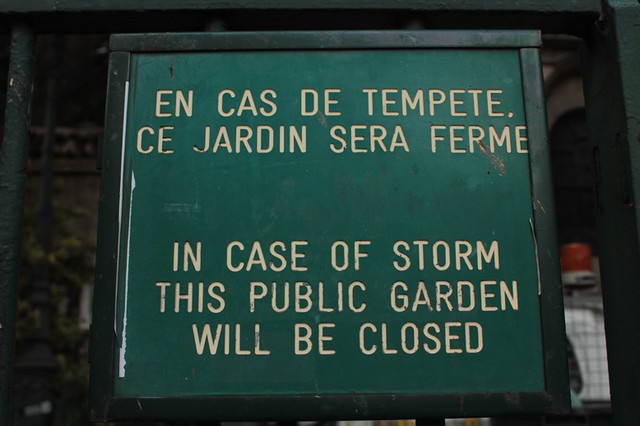


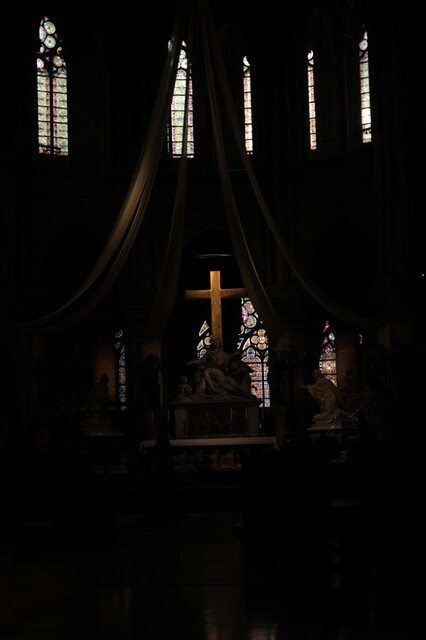


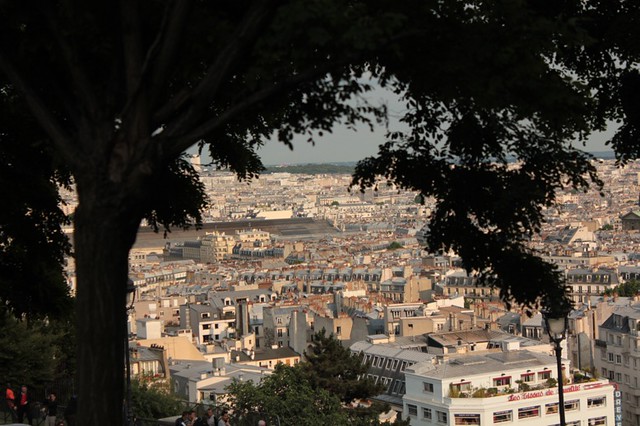

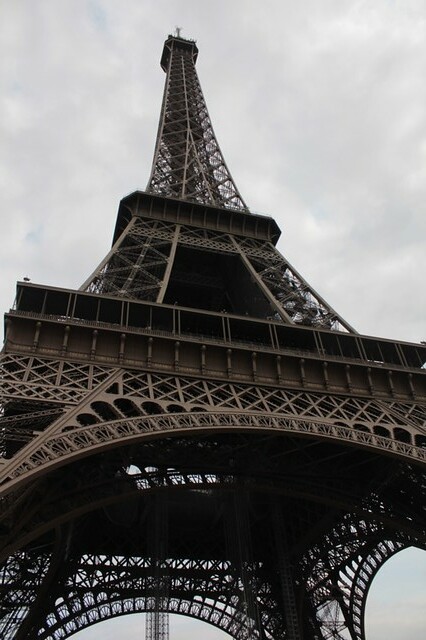
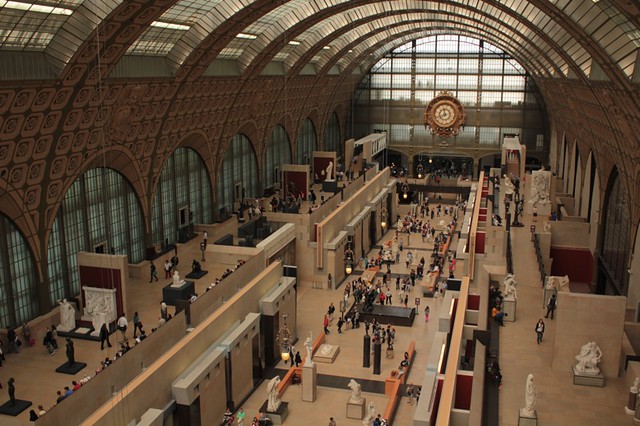










Etichette:
Conciergerie,
information,
montmartre,
Notre Dame,
Palais de Justice,
Pantheon,
Paris,
place du terte,
Sain Julien le Pauvre,
Saint Germain des Prés,
Saint Severin,
Saint Sulpice,
travel
venerdì 13 settembre 2013
Some usefull information about Paphos (Cyprus)
Paphos is an ancient port city that is located in the western part of Cyprus. We can say that the city is made up of two smaller cities: “high Paphos” and Kato Paphos , the "lower city".
Kato Paphos is the part where is located the port of the city, with a large area that at night became pedestrian and, always in Kato Paphos, you will find all the touristic shops and restaurant, the beach of the town (in this post I talk about some of the beaches I visited in the Paphos area), the biggest part of the remains of ancient civilizations and the two main bus stations in Paphos.
The bus stations are those of "Harbor" which is close the port and that of Karavella . These stations are the two bus terminal from where depart the buses that run through the city and/or to the beaches closer to Paphos (almost equally divided between the two ). From the bus station of Karavella also depart the "intercity buses" for those who want to visit other cities (eg Nicosia )
Now I tell you something about the bus tickets. The tiket for the Paphos area ( for example those for the beach), are avaible in three version: "one way" that costs 1,5 € (every time you change bus, you must do it again ), “daily” at 5 euro and “weekly “ which costs 15 € . The one-way ticket costs 2.5 Euros at night.
For the "intercity buses" I saw on the website of the company that the price depend on the route: for example, for the bus that takes you to Nicosia the "one way" tiket costs 7 € (for the return you will have to do it again ) and the daily costs 13 €.
The buses are always punctual with regard to the departure time and I found a small booklet with all the bus timetables at the station of the port.
Some places are, however, difficult to reach by bus and you have two alternatives: the first one is to rent a car in one of the many car rental that you can find in town (remember that in Cyprus you drive according to the left, as in London : Cyprus was a British colony), the other is to contact one of the agencies that organize excursions around the island. I tried the one called “Ruslan Travel” to go to the Troodos Mountains and I can not complain , the trip was well organized , and to visit Famagusta and Ayia Napa I went with the “Eos Tour: I admit that, in my opinion, we spent too little time in Famagusta and Salamina, especially since the city is located in the Turkish part of the island and you have to spent a lot of time to pass customs controls. Between the two I preferred the first one, but keep in mind that I've only tried one of their tour, so I could be wrong :)
You can find along Poseidon Avenue, the Tourist Center of Cyprus that will give you all the information you need and also various maps of the area :)
Etichette:
bus,
bus station,
cost,
Cyprus,
harbor,
karavella,
Kato Paphos,
price,
ticket
domenica 8 settembre 2013
Cyprus: The beaches in Paphos area
For those who still do not know, I have been in Cyprus for 12 days , staying in Paphos . The municipal beach of Paphos, is not sandy but totally floored and, for this reason, I have avoided it (It's not the kind of beach I prefer). So, in these 12 days, I decided to go to other 4 beaches and , in this post, I'll talk about 3 of these .
First of all there is to say all that can be reached with buses that depart from the station of " harbor " or that called ”Karavella". For two of these beaches (for example coral bay and Petra tou Romiou ) you need only one bus, for others (like the beach of the Baths of Aphrodite ) you have to change bus .
I begin with Coral Bay. To get there , just take the 615 bus leaving the station of " harbor " . I always get down to the last stop (if you want there is another beach at the stop before).
You find just off to your left, the restaurant (it doesn't accept credit cards) and on the right, a little further, the stairs to go down the beach. The sunbed & umbrella cost 2.5 euro each. If you have your umbrella (and bed / chair) put you where you can find place (and you will not pay, of course).
It is a sandy beach, blue of the water is very beautiful and the sea is hot. When you find a lot of people in the water, the water looks " dirty " even if it is not: it's due to the fact that it is a sandy beach.
Petra tou Romiou is ,instead, a "stone beach". You can get there directly by bus 631, which departs from the harbor station in Paphos. There is only a kiosk also quite expensive. If you do not have your "beach gear", It's better if you arrive early: there are not sunbeds and umbrella to pay for and you have to seat where is the shadow of the rocks (if it's free of people).
The water is quite cold , as the stony bottom , do not you pull out of the sand when people swim and the colors remain much better ( and they are spectacular ) .
The last beach I'm going to talk about is the one at the Baths of Aphrodite. To get here you have to take two buses : the first one is the 645 which takes you from Paphos (Karavella station) to Polis Chrysochous and 622 from Polis Chrysochous to the Baths of Aphrodite. This beach is, among those I've seen, the one I prefer . If you do not have your own equipment you have to arrive early enough: the beach is very small and sun beds and umbrellas end immediately (even with the space ) .
The water is very beautiful, especially the colors of the water: from the bar/restaurant you can really admire them .
I leave some photos for you to see what I can't express with words.
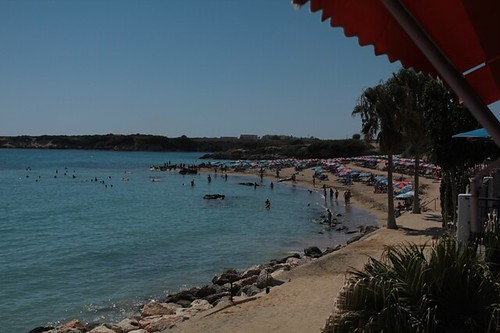
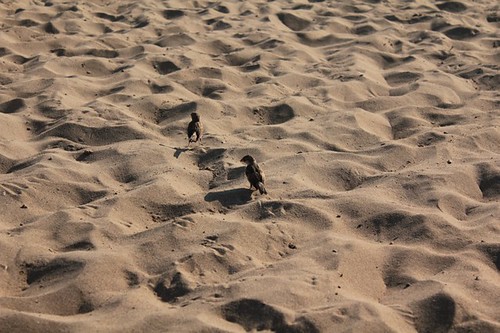
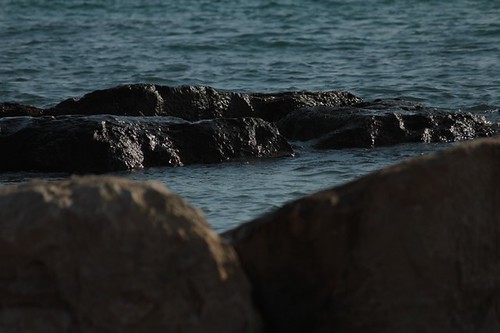
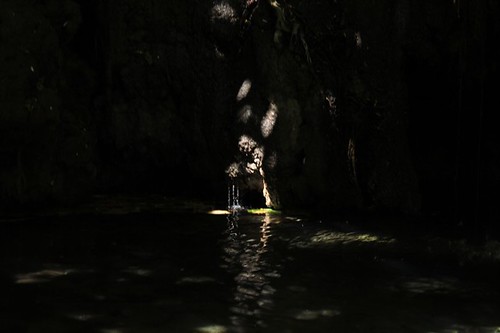
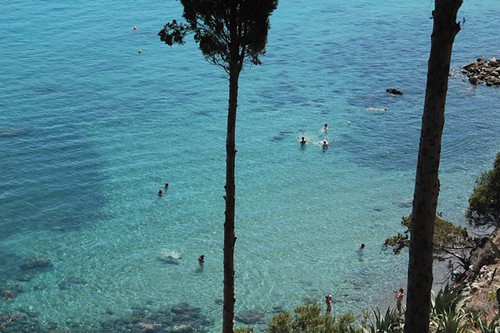


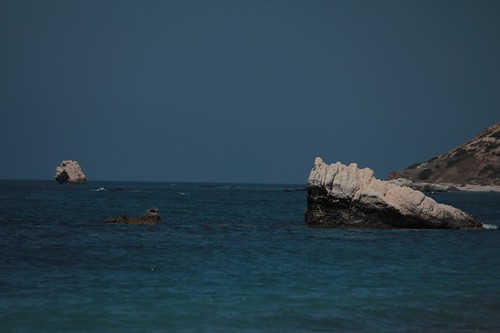

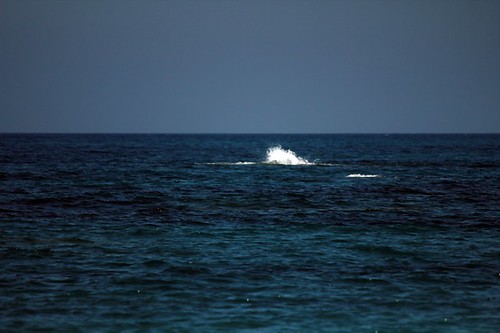










Etichette:
Aphrodite,
Baths of Aphrodite,
beaches,
Coral Bay,
Cyprus,
harbor,
karavella,
Paphos,
Paphos area,
photos,
pictures,
station,
summer
domenica 1 settembre 2013
A trip in Maremma: Talamone, Orbetello and Capalbio Marina
Today I bring to you in three beautiful places that are located in the Grosseto Maremma: Talamone, Orbetello and "Capalbio Marina".
The first stop was Talamone. We arrive at the harbor, where easily found parking (both blue lines, then a fee, both with white stripes and therefore free). After the usual photos to panorama, with the island of Giglio in the background, we arrive at a crossroads: on the one hand, the viewpoint and the other walls with a door to enter the old town: we decide to go to the lookout outside the walls, but found nothing different from other cars when viewed from the harbor. So we are reaching the door, noting that it seems that has been opened very recently. The walls were also being restored and then covered for much of the scaffolding (the bartender for one of several local café told us that the work going on since last summer). Talamone knew that was destroyed during the war and so we knew we would find almost all new homes. So we walked briskly on the door and we got to Piazza Garibaldi Garibaldi: we found them, dare I say "of course", a bust of Garibaldi and a church fenced (another thing being restored). We went running toward the castle, along a staircase very cute, short and to those "made of stones" (pass the word ... let's say that not one of those steps "modern" retains its charm in short). From there we could enjoy a different scenery and enchanting really deserved some pictures.
So we left for Orbetello, with the intention of stopping there to eat. Arrived in the long lagoon of Orbetello we parked the car and we sat there with our sandwiches. If you do not want to sit right next to the water there are also several benches (even in sunlight, if you want to add the feed the sun). The place is very quiet and beautiful, there are games for children and a purpose to bring the dogs (just on Saturdays from 06 to 15 the weekly market and therefore can not access them by car. With the car we passed the "front door" in the old country. The center itself is a pedestrian, quind you leave the car out (there are many free and paid parking is: if you arrive during peak hours there's sure to find parking. Inside you will find small but charming streets, shops, cafes with outdoor seating, restaurants and many other things for your enjoyment. If you have kids, you can get them in the cooler hours in the park that exists between the true center and port in the wall: you'll recognize it because it's really big and there are also games for their enjoyment.
We headed quickly toward "Capalbio Marina", which is between Capalbio and Ansedonia, in the village of Playa peat. The choice was not random: they went to sea when a child, I spent about a month's holiday in Tuscany. There was wind and we then repaired the dunes: every so often, however, we left the cool fresh breeze as the sun was hot! After a good hour of sun and tranquility, given that we were just across the beach, we returned to the car.
We arrived to the Tarot Garden, but given the amount of people outside (a couple of schools quite numerous) we decided, at least this time, skip the tour. We took the wrong road, but we ended up down a small dirt road always immersed in the green (greener than you can imagine). So, back on the Aurelia, we have taken the direction of Rome.
lunedì 15 luglio 2013
Some useful information about Paris
I could not avoid this post about some useful information about Paris.
I arrived at Orly Airport (South Terminal). To get into town I chose the OrlyBus: the ticket costs 7.4 euro, it stops at South and west terminals and takes you to Denfert-Rochereau where you can then take metro or RER. The alternative is a shuttle that takes you to the RER.
A single Metro tickets costs EUR 1.8: if you want save some money, you can buy a carnet of 10 tickets, it costs 13 euro (you save 5 euros) and you can use the automatic machines (at the counters do not take cash).
There are several metro lines (identified by an "M", a number and also with a color) and some RER lines (Identified by "RER" and a letter) and the metro lines works exactly like the London underground lines: at each station you will find a map with all the lines marked. You will find the line divided into two parts, depending on the terminal destination of that particular train. Check the stop where you have to get off and then find your direction of journey. Surely it is easier to do that I'll figure it out on someone who writes on the internet.
And now let's talk about food: Paris is not very cheap: keep in mind that even a basic food like pizza may cost 10 or 11€! A kebab is the cheapest food for lunch or dinner (usually they give you, in the same plate, fries or rice).
If you have between 18 and 25 years old and you want to visit a museum, get in line armed with documents: you have some big discounts... At the musée d'orsay I entered free: I showed the document at the time of taking the ticket and the cashier told me that I had only to show the document to the ticket check!
mercoledì 12 giugno 2013
A trip to Gubbio (Umbria, Italia)
We left the car in "piazza dei 40 martiri", where there are also some nice shady gardens for those who want to sit and stay cool (especially in summer). The church of San Francesco was closed, so we "jumped" the visit. After a stop at the bar on the "portico delle Logge dei Tiratori"(arcade of the Lodges of shooters), built in 1603, we began to delve into the streets of the country and we made a stop at the Church of St. John (XIII century). So we took the elevator and got up on the Piazza Grande, where the "palazzo dei Consoli" is, (It is now a museum. The price of the standard ticket is of 5 euro and the discounted is € 2.5) and, right there in front, there is the Praetorian Palace. This square is very particular: it is squared and has a very nice overlooking on the Umbrian hills.
We take the elevator for the second time and we come to the gardens of the cathedral and then to the Cathedral ("Cathedral of Saints Marian and James"). We look in the Civic Museum just for a moment (5€ for the standard ticket and € 2.5 for the discounted one), but we avoid the visit
So we arrived to the city walls and the port of St. Ubaldo. At this point there is a choice you have to made: get to the Basilica of St. Ubaldo embarking on a path that would take you half an hour away (at least, unless you're more than trained) or go back and take the cable car (ticket: 5 € ). We are back to take it (the journey will take you about 10 minutes away). Once you reach the top you will find two bars / pizzerias.
So we get to the Basilica of St. Ubaldo, a beautiful basilica, a must - visit. Near the altar there are the remains of the saint and in one of the side aisle there are the candles of the famous race of the candles. You can get here by car, follow the signs.
Leaving the basilica we can not avoid stopping to admire the view, and especially the one of Gubbio: the city has a completely different charm.
There are also many other things to see, many small churches to visit and glimpses which draw our attention. Unfortunately, we did not have more time and we came away: but surely, sooner or later, we'll be back to visit all that we have not seen.
I leave you, as usual, a few photos. (Here is the link to the set on flickr with all the photos)
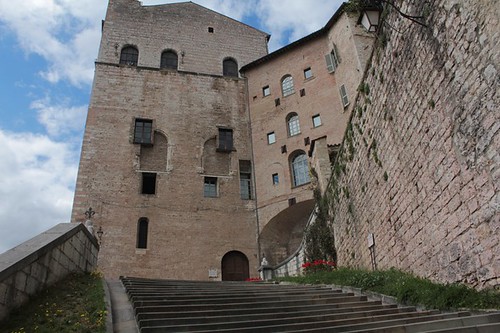

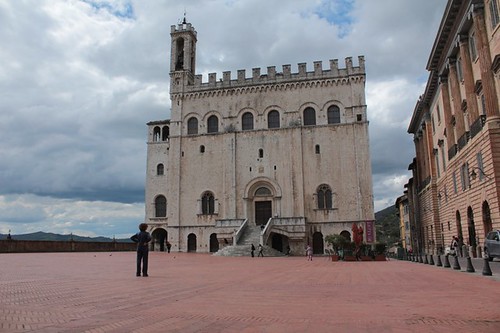

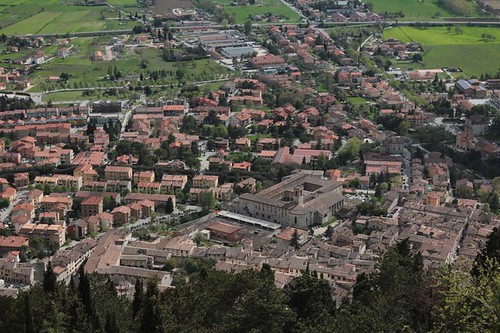


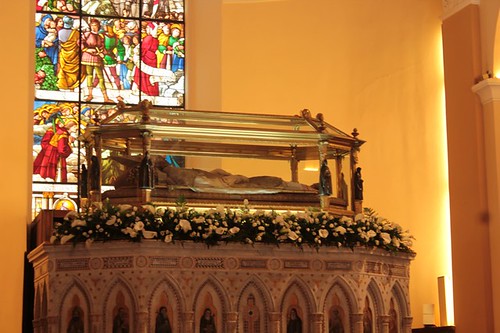










Etichette:
arcade,
gardens,
Gubbio,
Italia,
Italy,
Lodges of shooters,
loggia,
martiri,
port of St. Ubaldo,
Praetorian Palace,
race of the candles,
square of the 40 Martyrs,
tip,
travel,
Umbria
martedì 11 giugno 2013
Rome seen from its highest points
Even when you look at it from its highest points (maybe I should say "especially"), Rome is truly fascinating. It becomes even more charming than usual.
I began to look for various high points of the city after that, on facebook, I asked if anyone had ideas, suggestions and "desires" on what to see on my blog and youtube channel, and the answer that one friend gave to me was just "the highest points of Rome". Then, from (approximately) mid-April, I started my "pilgrimage" in the various terraces of the eternal city taking pictures and shooting short videos for the final one. I went to Castel Sant'Angelo, to the Janiculum Hill ("Gianicolo"), the Orange Garden, the stairway of Trinita dei Monti and the "Pincio" (in Villa Borghese), the Victorian (where I didn't go to the top of the building) to complete all enjoying the view from the "terrazza dello zodiaco" (terrace of the Zodiac), which is located in the nature reserve of Monte Mario.
No, the picture is "always the same": of course, the buildings are always the same, but each of these terraces is located in different and every building, so you can see it from a different point of view and next things first, perhaps, were hidden. Change rooftop terrace and see the others as are nestled in the landscape of this city. In short, Rome is a city that never tires (and maybe I'm slightly biased) is seen "from below" that come from and the best way to express the concept is to make you see the photos and video. If you want to see all of them, you can find the complete set on flickr.
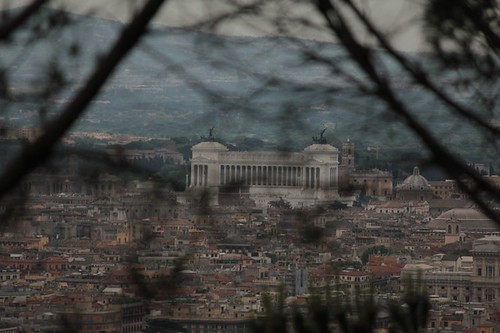
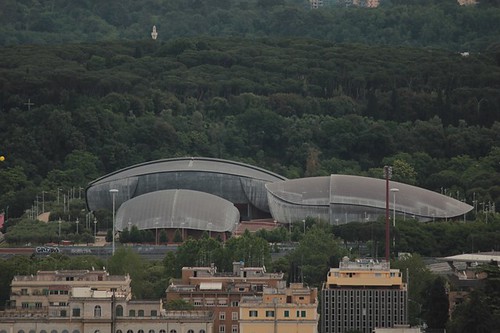
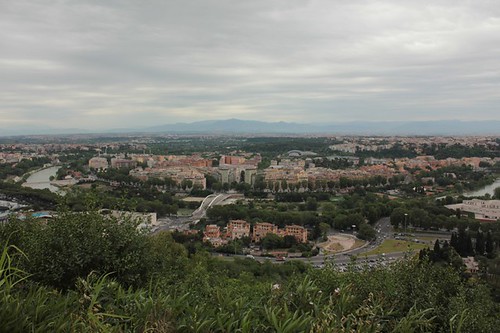







Etichette:
arance aranceto,
Castel Sant'Angelo,
eternal city,
garden,
Gianicolo,
giardino degli aranci,
Janiculum Hill,
orange,
Orange Garden,
Rome,
stairway of Trinita dei Monti,
terrace of the Zodiac,
terraces,
views
venerdì 31 maggio 2013
Roma: Isola Tiberina
On Sunday (May 26th), I went for a walk on the Tiber Island, the island located in the middle of the Tiber with a shape that resembles a boat.
It is located in "Rione Ripa" and is connected to the mainland by "Ponte Cestio" (from the side of Trastevere) and the "Ponte Fabricio" (the side of the Ghetto). From the side of Portaportese people can see the bridge called "broken bridge": that is what remains of a Roman bridge broken (even several times) by the fury of the "blond Tiber", the infamous river of Rome and that, although he did this end, does not leave indifferent the people who pass by here.
Coming from the bridge Cestius, there is on the right of the Basilica of St. Bartholomew on the Island: it definitely deserves a visit. From the side of the "bow" (the side of the island towards the Garibaldi bridge - the bridge of the tramway) there is the Fatebenefratelli hospital: the structure was founded in the Middle Ages as a "xenodochio", to accommodate pilgrims, the poor and the sick. Often, I stop to look at this hospital as it is surrounded and hidden in the vegetation which clear and hides the chaos of the city for the patients.
Just before the bridge Fabricio there is the small Church of St. John Calibita: I think the smaller churches, in some ways, are almost always the prettiest.
The thing that strikes me most of this island of Rome is the amount of people who, during the sunny days of summer, bring along the banks for sunbathing as if they were at sea: the sun of Rome and the Tiber Island are a winning combination for everyone! In summer it is one of the best places to spend warm evenings: there you can find "the island of cinema", from the side of "stern" (or "of the broken bridge", if you prefer) and there are also several outdoor pub, so you can spend your night outdoor in the centre of Rome!
I personally think that going through this island / boat I find it one of the best ways to cross the Tiber staying in a simply outstanding historical climate (let's face it: the Romans are always the Romans). Try it and let me know your opinions.
Now I launch a challenge to you: do you know that, in the stone of the island, is carved the Rod of Asclepius (the symbol of medicine)? According to the story told by Livy, in 229 BC The Romans went to Epidaurus, where once stood the largest sanctuary of Asclepius, god of medicine, to ask the oracle how to end a plague that was thrown over the city. The priests of the god handed over to the Romans a sacred snake which, as the ship arrived in the port Tiberino, jumped into the water and crawled to the island, hiding in the dense vegetation.
Here, I challenge you to find it! Let me know!
[On flickr you can find the set with all the pictures I took when I visited the island]
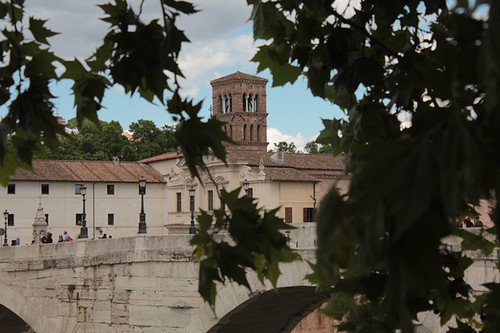
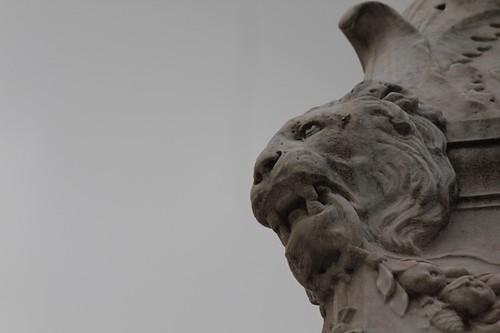

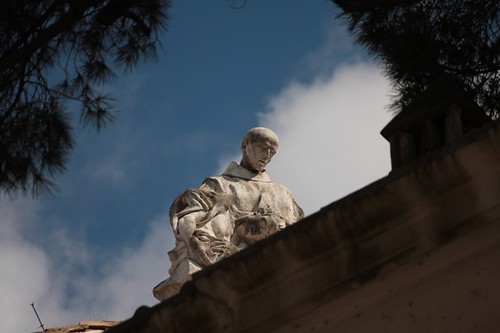




lunedì 27 maggio 2013
A trip to Viterbo
Viterbo, city in the "Tuscia" area, offers several monuments and things to do and see.
On May 14, I went to visit this city principally for two reasons: the underground Viterbo and the medieval quarter of San Pellegrino. It was the first visit "for tourism".
You can get there by train: Trains depart from Rome Ostiense station and make many stops within the city of Rome (Trastevere, quattro venti, valle aurelia, are some examples) and the journey take a couple of hours.
I arrived at the station "Viterbo Porta Romana" just before 10: I decided to start my visit in the town from the Viterbo underground, so I headed to Piazza della Morte: the strange name of that square is due to the "company of death" which at one time ran the graves!
In this square is located the shop/ticket office/access to the underground city: the Tours starts every half hour and the price of the ticket is 4 euro (in Orvieto I had paid 6 euro). You can visit about 150 meters of tunnels and the guide told us that as their "private company" (sorry for the quotes, but I do not know which words to use to explain) have in managing this part of Viterbo approximately from last year and they are trying to dig also other parts that can be dug, but, unfortunately, there are a lot of problems and these problem are not always easy to solve (especially everything related to the bureaucratic part of the story). The underground part of Viterbo is in tuff, such as Pitigliano, Orvieto and Civita di Bagnoregio. If you're nearby, you can visit this part of Viterbo: it's cute and the price is, after all, still affordable.
Once you have finished your visit, you must go to the medieval quarter of San Pellegrino: when you walk along the streets of this area of the city, seems to have stepped back in time: there are many details that attract the attention of visitors. There are also a lot of things which attract the attention of tourists end there are a lot of things that you can photograph.
After that, I walked to Piazza San Lorenzo where I knew to find several important buildings of the history of Viterbo: the Palace of the Popes, the Cathedral of San Lorenzo and the Mansion of "Valentino della Pagnotta" (from the name of the prior who bought the building in 1458); in front of the mansion there is a beautiful building: if I'm not mistaken there is the seat of the Bishop and, if you go up the stairs, you find yourself in a terrace on Viterbo (but does not have a great view: you can see important buildings, but the biggest part of the view is on the modern part of Viterbo).
Taken from the fatigue, the last leg of my day was the Piazza del Plebiscito with the government palace, the Palazzo dei Priori and the sarcophagus of Beautiful Galliana (at that link you can find some information about "Galliana", but is written in Italian).
There are many other things to do in Viterbo, such as the Cathedral and many other churches that are found there. Maybe one day I will return to see those too.
There is the link to the set on Flickr with all the pictures I took during my day in Viterbo.




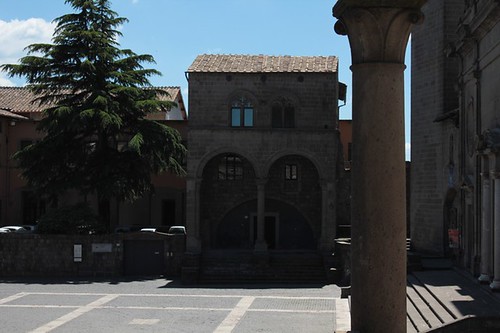







Etichette:
Cathedral of San Lorenzo,
Civita di Bagnoregio,
Medieval,
Orvieto,
Palace of the Popes,
Pitigliano,
San Pellegrino,
tourism,
Tuff,
underground Viterbo,
Viterbo
Iscriviti a:
Post (Atom)